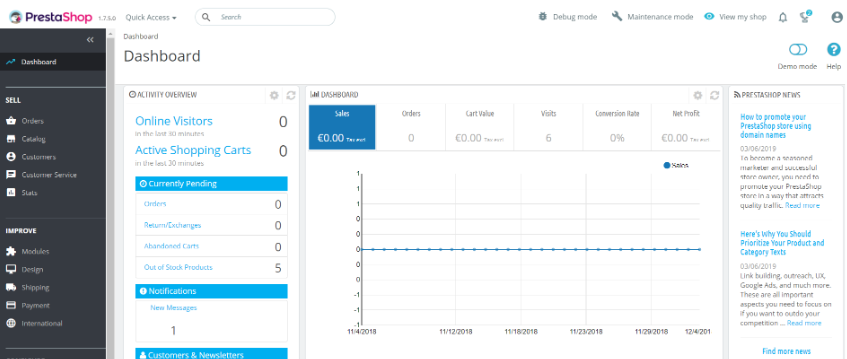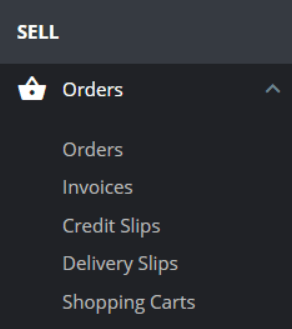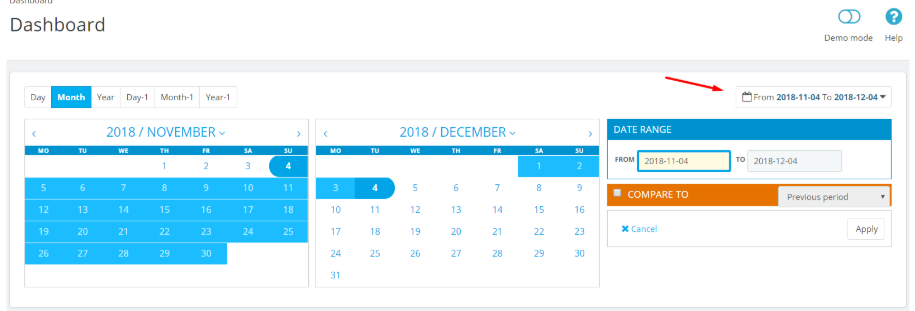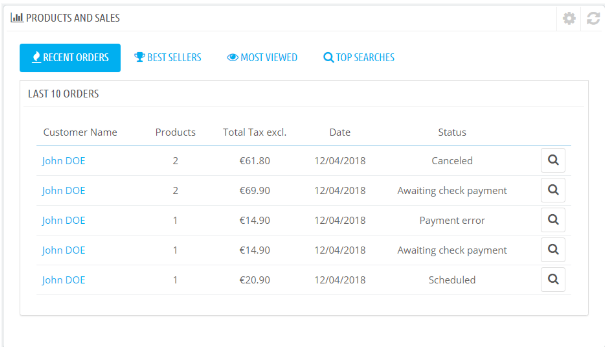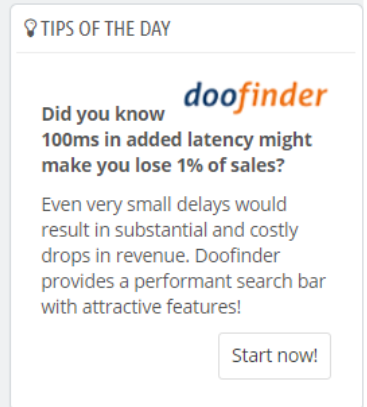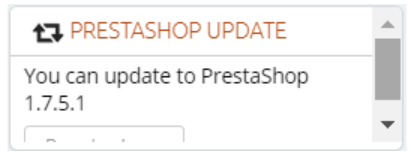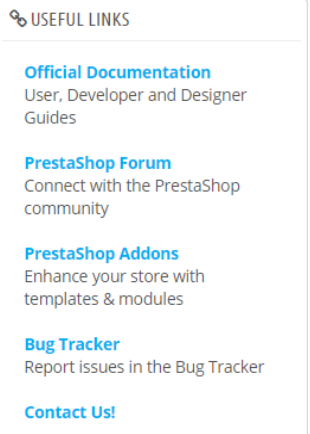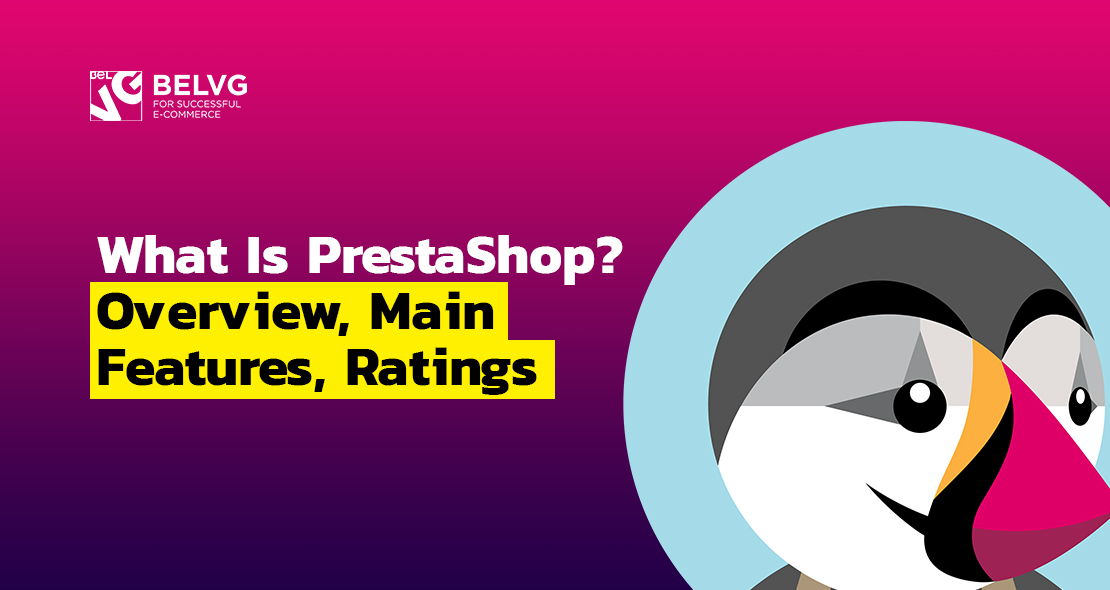
Launched in 2007 in France as a student project, PrestaShop came a long way to rightfully take the place as a leading ecommerce platform around the world. At the moment, there are 270.000 online shops running on PrestaShop, French McDonalds, Salling.dk and other famous brands websites among them, and the number of its open source community members amounts to the dashing 1.000.000 + people globally.
Table of contents:
General information
Technical requirements
PrestaShop key features
How to use PrestaShop
Customization: modules and themes
What can be improved in PrestaShop?
General information
PrestaShop is a free and open source platform for retailers to create and manage online stores. This is a universal solution that can be scaled up to fit large enterprises or down for middle and small businesses. Another characteristic that contributes to PrestaShop wide popularity is a large number of default features that suffice for adequate webstore management. However, in case a retailer lacks certain functionality, they would most probably find a suitable extension or plugin at the PrestaShop marketplace that offers an exceptionally wide selection, both free and paid.
Technical requirements
For PrestaShop to run properly, the system needs to match the following technical requirements:
- Windows, Mac and Linux operating systems;
- Apache 2.x, Nginx or Microsoft IIS web server;
- WampServer or EasyPHP for Windows, XAMPP or Bitnami for Windows and OS X prepared packages;
- PHP 5.6+ and MySQL 5.0+ technologies.
PrestaShop Key Features
The facts that PrestaShop is free and open source are not the only competitive advantages of the platform. The list of built-in features that encourage merchants to opt for this solution is rather long, so I will enumerate the selection of the most prominent ones.
- Unlimited listings,
- Inventory management features like item tracking and out-of-stock alerts,
- Simple export and import of data in CSV format,
- Advanced SEO capabilities – management of meta titles and descriptions and URLs,
- Large selection of payment options: PayPal Standard and Pro, Skrill, Stripe, WorldPay, offline processing and many others,
- Precise shipping estimation,
- Creation of custom promotions,
- Customer emails automation,
- Advanced navigation and search,
- Visitors statistics,
- Sales and orders statistics,
- Multiple store management,
- Multi-language: default support of 75 languages,
- Customizable checkout process,
- Cart abandonment notifications,
- Compatibility with a large number of add-ons and third-party integrations.
Obviously, this is not a complete list of this ecommerce platform’s outstanding features, and its full list you can find here.
How to work with PrestaShop
It would be very ambitious of us to claim that it is possible to explain how to work with PrestaShop in one part of this article, but this is not our goal here. What we aim at is to demonstrate the back office of PrestaShop and get you acquainted with the core admin capabilities of this ecommerce solution.
First of all, this is where you log in to your admin panel.
This is your main admin dashboard.
On the left, there is the admin menu, consisting of three major sections – SELL, IMPROVE and CONFIGURE, with a certain number of tabs in each.
Nearly every tab is expandable, revealing an ordered selection of corresponding functionalities.
The main dashboard, in its turn, reflects the following analytics (its date range can be configured here):
- Activity overview: the number of online visitors, active shopping carts, currently pending orders, returns and exchanges, abandoned carts and out of stock products, notifications in real time, as well as newsletters and customers and traffic (that can be integrated with a Google Analytics account if you have one).
- Dashboard with the graph that demonstrates the sales curve over a certain period.
- Forecast section, where you can choose for your future traffic, conversion, average cart value and sales to be calculated and predicted.
- Product and sales with the list of recent orders, best sellers, most viewed and top searches.
On the far right, there are four small boxes with certain useful information as well:
- PrestaShop news;
- Tips of the day;
- PrestaShop update recommendation;
- Useful links.
In the upper right corner, you will find the following functional buttons that will switch you to:
- debug mode,
- maintenance mode,
- customer view mode (View my shop),
- demo mode,
as well as:
- alerts sign (bell),
- merchant expertise sign (goblet).
This is how the PrestaShop admin panel looks like and its major functionalities. If you wish to explore how to configure certain aspects of your online shop, explore our articles-user guides over PrestaShop admin:
PrestaShop 1.7.5: Configure Slider, Change Header Logo, Edit Footer and Other
How to Manage Order Statuses, Edit Order Messages and Add Tax Rules in PrestaShop 1.7.5
PrestaShop 1.7.5: Configure Product Attributes, Emails, Promotions and Other
How to Add Language and Carrier in PrestaShop 1.7
How to edit PrestaShop 1.7.5.0: Customers, Cart Price Rules and Discounts
Customization: Modules and Themes
No matter how wide the PrestaShop functionality is, sooner or later you may need some additional functions absent from the list of the default ones. Certified PrestaShop developers offer offers a large selection of free and paid modules that will help merchants extend their webstore functionalities. The extensions come in multiple categories: Product Page, Design & Navigation, Promotions & Marketing, Traffic & Marketplaces, Payment, Shipping & Logistics, Administration, Customers, Facebook & Social Networks and Specialized Platforms, and compatible with all PrestaShop versions.
The cost of an average integration varies from 50 to 100 euros, which is a rather competitive price at the modules market. However, if your budget is limited, you can easily find a free solution; just don’t expect exceptional quality and results from them.
Another customization aspect is webstore design, and in this aspect the possibilities are wide as well. There are hundreds of PrestaShop themes on the market. You can find templates for every taste, online store specific and budget.
What can be improved in PrestaShop?
Many words have already been written about what makes PrestaShop so widely-loved, but doesn’t it have any flaws? Indeed, there are certain points of criticism.
- Additional costs. The PrestaShop itself is free, and it is true, yet the hosting and domain registration costs still need to be paid. However, the choice of hosting is up to you, so it is possible to minimize these spendings. The cost of additional customization solutions has also been criticized.
- Certain developer skills are required. To properly manage PrestaShop a store admin must possess certain developer knowledge, or master these skills in a very short period of time.
- Modules can be incompatible with each other. Since PrestaShop addons can be created by different developer teams, it’s no wonder some of them may interfere with each other’s functioning. The best solution here is the trial-and-error method – if certain addons are incompatible, find a substitute as soon as possible.
Wrapping it up
All in all, the advantages of PrestaShop ecommerce solution outbalance its faults, so if you are considering getting PrestaShop for your new online store, go for it. Yet, if you are still not fully convinced, read our comparison of PrestaShop with such popular ecommerce platforms like OpenCart and WooCommerce.
If you don’t believe you are competent enough to perform PrestaShop installation on your own, BelVG is here to help you.



